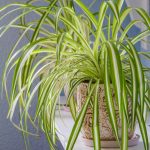Variegated Monstera is like the Ugly Duckling. It starts out as a normal green seedling, but as it grows it begins to show its true colors: a gorgeous, heart-stopping mix of green and white. This showstopping half-sibling of the popular Monstera plant is becoming increasingly popular, but supply doesn’t meet demand in this case. Read on to find out more about why this plant is so rare, as well as tips on where to buy variegated Monstera and how to care for it.
Variegation is certainly a strange mutation, but it causes some very stunningly beautiful variations in plants. If you’re like me and need a refresher on biology: living things are made up of DNA, which is wound up into little packages called chromosomes. Sometimes two of these different chromosomes get combined and mixed up, and this causes a mutation. These mutations can occur in all kinds of features, but when it occurs in a plant it messes with the chlorophyll, or the green pigmentation seen in plants. When this happens, it’s called a chimera variegation and results in some tissue with chlorophyll and some without it. The sections that don’t have any chlorophyll are usually a white, silver, or pale yellow. Some plants have variegations that are flecks or spots of white, some have stripes or designs, and some are half and half.
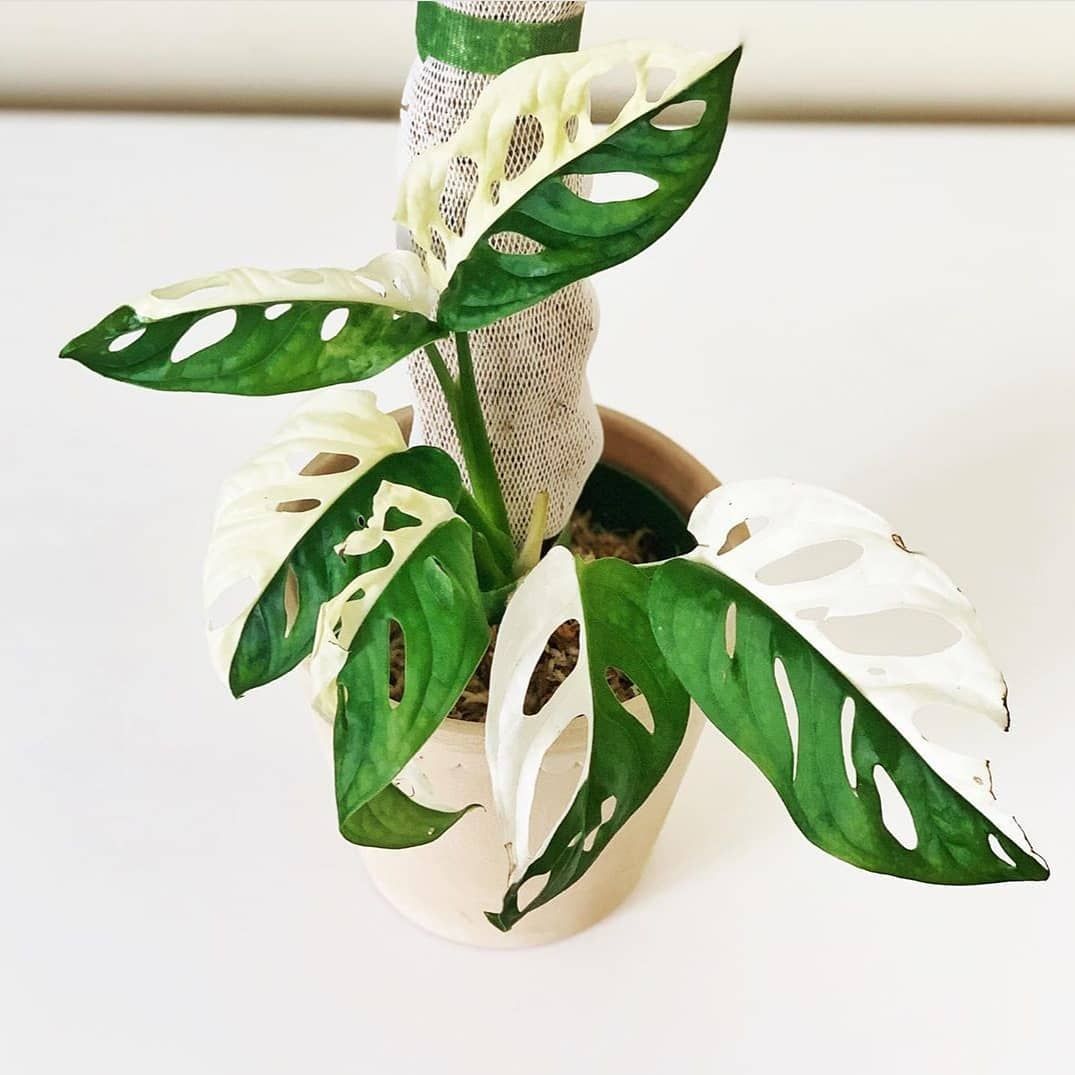
People love variegated plants, and they love Monstera. That makes for one very popular plant: the monstera deliciosa variegata, or Variegated Monstera Deliciosa. Unfortunately though, variegated Monstera is very hard to find. This is because variegation in Monstera is just an accident, and it’s hard to cultivate. There is little research done on how to increase the cultivation of variegated Monstera. Shortage of cultivation added to increasing popularity equals one expensive plant!
Another reason monstera variegata is so rare is that it is harder to care for than regular Monstera. Variegated Monstera is more delicate, and because of the lower production of clorophyll it photosynthesizes (the way plants use sunlight to get food from carbon dioxide and water) a lot less. Growing a variegated Monstera Delicata is a slow process and requires some skill to keep it alive.
There are a couple of types of variegation in Monstera. Marbled variegation has an even distribution of green and white. Half-moon features leaves that are half white, half green. These are the more stunning, and the more expensive. They can go for upwards of $150, while the marbled Monstera can go for around $40. The half-moon variety is not very hardy and is prone to wilting and dying.
If you want to buy variegated Monstera, the first place to look is locally as it is always best to see the plant in person. Check if there is a plant store near you that specializes in rare plants, or even check at your local nursery. While regular nurseries don’t usually carry variegated Monstera, on some occasions you can luck out and find one. If you can’t find any nearby, the next place to go is online. There are a lot of online stores that sell rare plants, though these can be very pricey. You can often find cuttings on Etsy and eBay. When buying a plant online, always check to see if the listing has actual images of the plant, not just stock images, and check the seller’s reviews.
Variegated Monstera Care
Light
The white pigment in this plant can’t absorb sunlight, so make sure to give your variegated Monstera a little extra light to help the green parts. Place your plant in bright, indirect light. Rotate your plant periodically to ensure that it is growing evenly on all sides. Dust the leaves occasionally so that your plant is able to photosynthesize efficiently.
Water
This Monstera likes a bit more water than green varieties do. It likes consistently, lightly moist soil, but it doesn’t like overwatering or sitting in water. Before watering, check to make sure the soil isn’t moist right beneath the surface. If the soil is dry at least two inches below the surface, it’s time to water. Use filtered water or tap water that has sat out for 24 hours to reduce the salt and mineral levels.
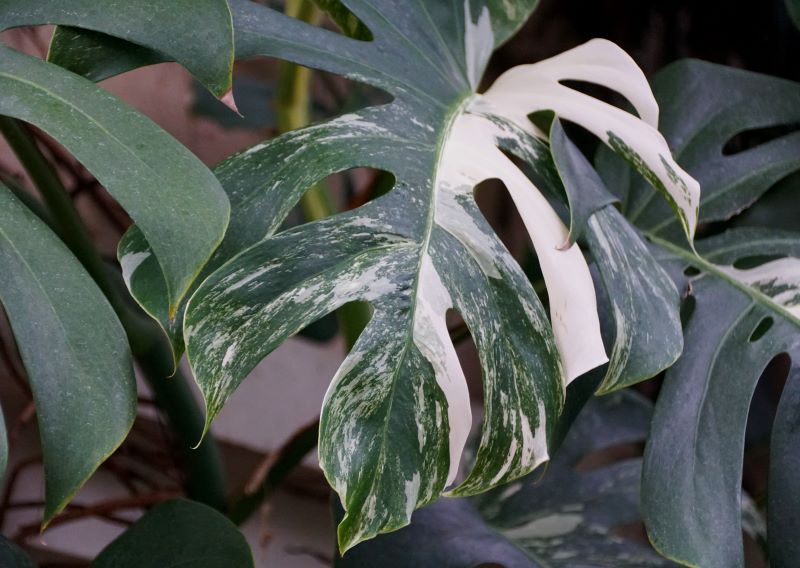
Humidity
Variegated Monstera thrives in more humid environments, ideally above 60% humidity. Don’t place your Monstera in front of vents as it could be exposed to dry air. A daily spritz with a spray bottle will help keep up your plant’s humidity levels.
Temperature
This plant enjoys temperatures between 65° and 80° F (18-27° C).
Soil
Use a well-draining potting soil. It’s a good idea to add extra perlite or orchid bark to normal potting soil to improve drainage.
Repotting
Most variegated Monsteras need to be repotted up a size every two years. The best time to repot is in the spring or fall. Use a pot that is just a little bigger than the current size. Monsteras like something to climb, so it’s a good idea to add a pole or a small trellis.
Fertilizer
Fertilize every other month, no more than once a month, during the spring and summer. Use an organic houseplant fertilizer diluted to half strength.
Pruning
Monsteras can grow many feet if left unpruned. If you want your plant to be shorter, or it’s getting too bushy, it can handle pruning. Always cut below a node.
Toxicity
Monstera veriegata is mildly toxic to humans, and toxic to cats and dogs.
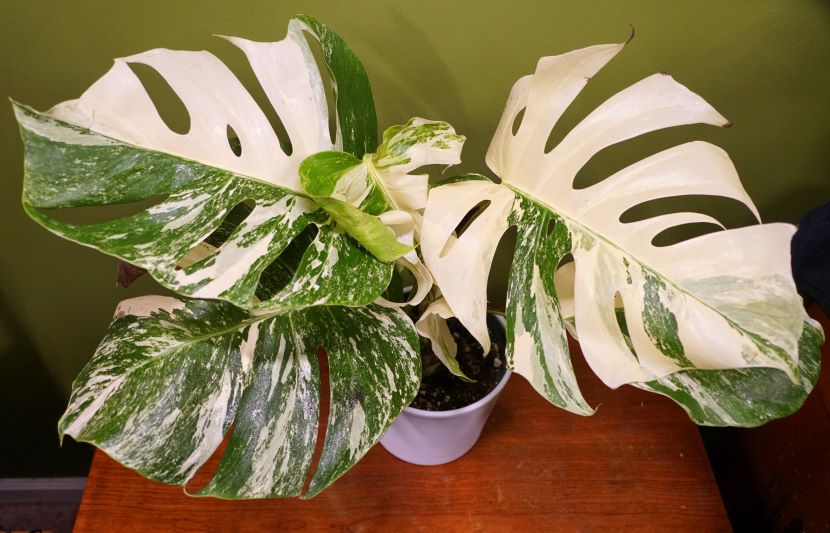
Common Problems
Edges turning brown: Too little light or salt buildup in water
Leaves turning yellow: Needs proper light, or is being overwatered. If none of these is the problem, it might be rootbound. You can tell if it’s rootbound if ariel roots become exposed above the topsoil. If that’s the case, time to repot.
White parts turning brown: Increase humidity by misting the leaves, placing a tray containing pebbles and water below the pot, or turning on a humidifier. Make sure your plant is getting enough light. You can remove the brown parts by cutting along the curve of the leaf to prevent more browning.
Mites: These little pests suck plant sap from the underside of leaves, and can destroy the plant if they get to be too large in number. Look for drops and accumulations of tiny bugs on the undersides of the leaves. To get rid of them, spray with diluted soap or alcohol.
Scales: These pests are brown or black in color, sometimes white, and suck on plant sap. Spray with diluted soap or alcohol.
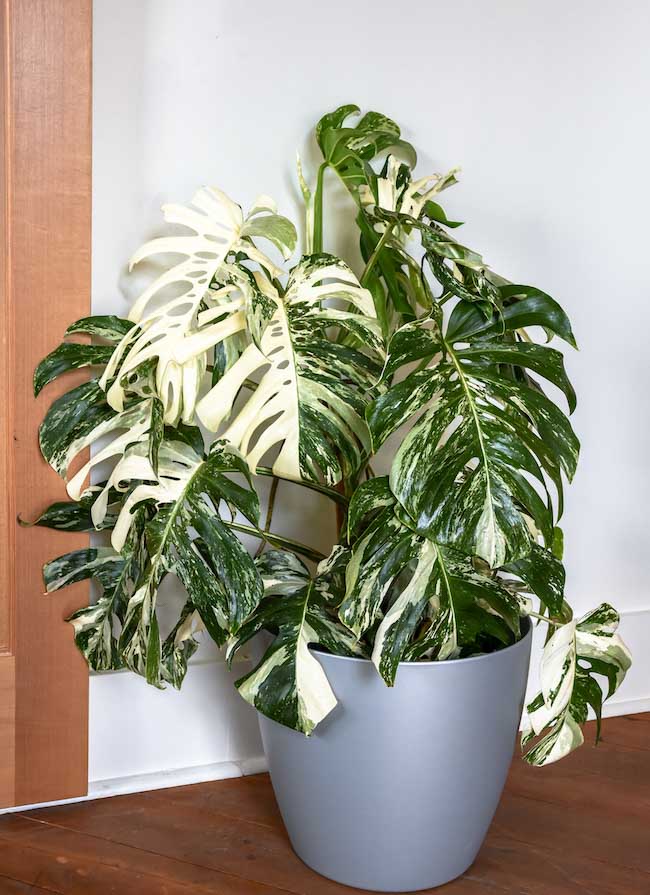
Conclusion
If you’re willing to spend a bit more on time and money, and are looking for a stunning addition to your home, start looking for this multi-colored version of the Monstera plant, the beautiful variegated Monstera Delicata. It will be like a treasure hunt, but it will certainly be worth it when you bring home your new plant. On top of that, you’ll feel like you just found a chest of buried treasure when you first set eyes on the gorgeous hues of the variegated Monstera.




